A kitchen is an essential place in every household, where all the day’s meals are prepared.
Kitchen utensils and equipment refer to the tools, devices, and appliances used in a kitchen to prepare, cook, serve, and store food.
Kitchen utensils and equipment are required for efficient and safe food preparation and come in various materials and designs.
These equipment include pots, pans, knives, cutting boards, measuring cups and spoons, mixing bowls, blenders, toasters, refrigerators, and more.
They are grouped into the following four headings, depending on their usage:
- Large Equipment
- Mechanical Equipment
- Tools and Utensils or Small Equipment
- Measuring Tools
1. Large Equipment

Large Equipment includes the tools permanently fitted in the kitchen after installation.
They are commonly found in almost every kitchen. They include:
- Stove or range: This is a large cooking appliance with burners or heating elements used for cooking food.
- Oven: An oven is used for baking, roasting, and broiling food.
- Grill: A grill is used for cooking food over an open flame, typically for meats and vegetables.
- Fryer: A fryer is used for deep-frying food like French fries or chicken.
- Refrigerator: A refrigerator is used for storing perishable food and keeping it at a safe temperature.
- Freezer: A freezer is used for storing frozen foods and ice.
- Dishwasher: A dishwasher cleans dishes, utensils, and other kitchen equipment.
- Food processor: A food processor is a versatile appliance for chopping, blending, and pureeing food.
- Mixer: A mixer is used for mixing dough and batters. They are also used for whipping cream and other ingredients.
- Industrial dishwasher: Industrial dishwashers are used in large-scale commercial kitchens to quickly and efficiently clean many dishes and utensils.
2. Mechanical Equipment

Mechanical Equipment is operated with electricity. They include:
- Refrigerator – used for storing food and drinks at low temperatures.
- Microwave – used for quickly heating or cooking food by using electromagnetic radiation.
- Dishwasher – used for washing and sanitizing dishes, utensils, and other kitchen items.
- Blender – used for mixing and blending ingredients to make smoothies, sauces, or soups.
- Food Processor – used for chopping, grinding, and pureeing food.
- Toaster – used for toasting bread, bagels, or other baked goods.
- Coffee Maker – used for brewing coffee.
- Mixer – used for beating and mixing ingredients for baking and cooking.
- Juicer – used for extracting juice from fruits and vegetables.
- Deep Fryer – used for frying food by immersing it in hot oil.
- Griddle – used for cooking pancakes, eggs, and other foods that require a flat surface.
- Range Hood – used for removing smoke and cooking odors from the kitchen.
- Waffle Maker – used for making waffles.
- Rice Cooker – used for cooking rice.
- Slow Cooker – used for slow-cooking stews, soups, and other dishes.
- Meat Grinder – used for grinding meat and other foods.
- Pasta Maker – used for making fresh pasta.
- Ice Maker – used for making ice.
3. Tools And Utensils (Small Equipment)
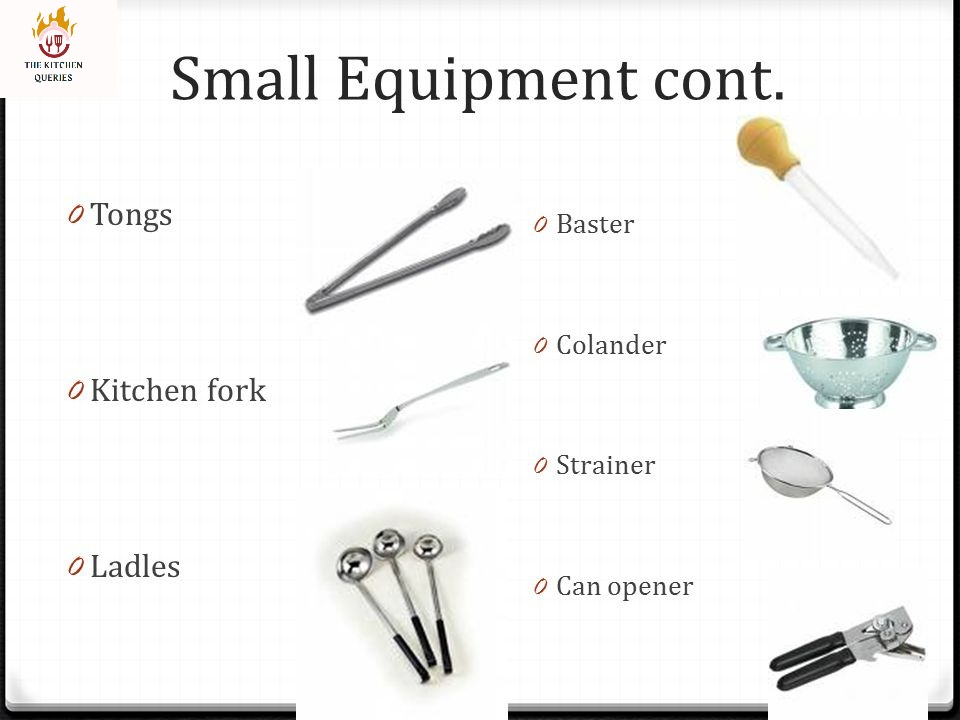
They include the equipment that is used daily in almost every kitchen, for example:
- Graters.
- Earthen wares.
- Wooden articles such as wooden spoons, mortals and pestles, chopping boards, rolling pins, etc.
- Plastic wares.
- Cooking pots and pans.
- Tim wares.
- Kitchen cutlery.
4. Measuring Tools

Measuring Tools include:
- Scales (balance scales and spring scales).
- Measuring cups.
- Measuring spoons.
Uses And Care Of Cookers

Cookers are appliances that help you prepare a wide range of dishes quickly and efficiently.
Some common types of cookers include gas cookers, electric cookers, and induction cookers.
Here are some of the most common uses of cookers:
- Boiling – Cookers can boil water for cooking pasta, rice, or other grains.
- Simmering – Cookers can simmer stews, soups, and sauces at low and steady heat.
- Frying – Cookers can fry chicken, fish, and French fries.
- Roasting – Cookers with ovens can be used for roasting meat, poultry, and vegetables.
- Baking – Cookers with ovens can be used for baking cakes, bread, and other baked goods.
- Grilling – Cookers with grilling functions can be used for grilling meat, fish, and vegetables.
- Stir-frying – Cookers with a wok burner or high heat setting can be used for stir-frying vegetables and meats.
- Steaming – Cookers with a steaming function can be used for steaming vegetables, fish, and dumplings.
Care:
The Cooker should be cleaned after every usage. The wire gauze must be removed, washed with warm soapy water, and thoroughly rinsed.
The enamel component should be cleaned with warm soapy water and a duster to avoid any scratches on the surface.
Uses And Care Of Sinks

Sinks are an essential feature of any kitchen or bathroom.
They are used for a variety of purposes, including:
- Washing dishes – Sinks are primarily used for washing dishes, pots, pans, and utensils. They are equipped with faucets and spray nozzles to help clean the dishes thoroughly.
- Food preparation – Sinks are also used for food preparation, such as washing fruits and vegetables before cooking or chopping them.
- Handwashing – Sinks are used for handwashing before and after handling food, using the bathroom, or any other activity that requires clean hands.
- Cleaning – Sinks are used for cleaning and rinsing surfaces, such as countertops and cutting boards.
- Filling water containers – Sinks can be used for filling water bottles, tea kettles, or other containers with water.
- Hygiene – Sinks are used for maintaining hygiene in the kitchen and bathroom, helping to prevent the spread of germs and bacteria.
Care:
Proper care and maintenance of sinks can help ensure their longevity and prevent damage. Here are some tips for caring for sinks:
- Clean regularly.
- Avoid abrasive cleaners.
- Rinse thoroughly.
- Avoid leaving standing water.
- Use a sink mat.
- Don’t overload the sink.
- Fix leaks promptly.
Uses Of Refrigerators
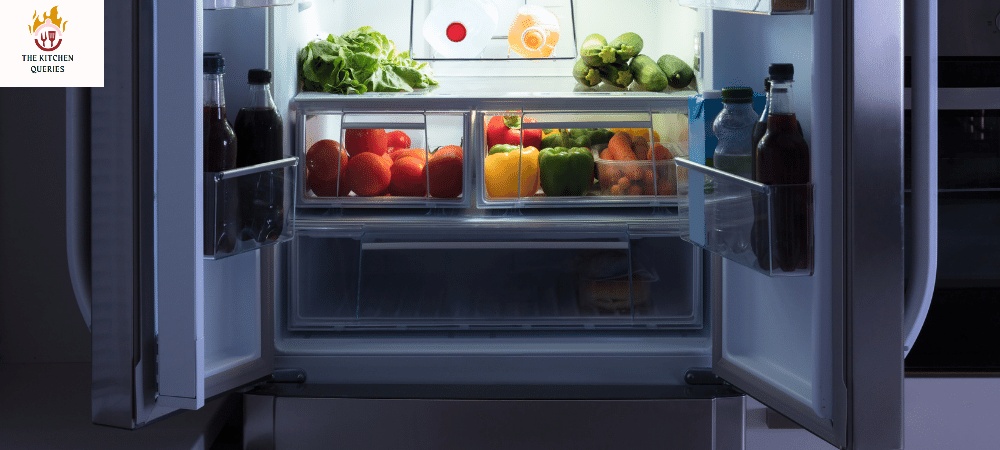
Refrigerators are essential in most households, providing food storage and preservation benefits. Here are some of the most common uses of refrigerators:
- Food storage – A refrigerator’s primary use is storing food, keeping perishable items such as meat, dairy products, fruits, and vegetables fresh for longer periods.
- Beverage storage – Refrigerators are also used for storing drinks, such as water, juices, sodas, and alcoholic beverages.
- Food preservation – Refrigerators help slow down the growth of bacteria and microorganisms in food, preserving their freshness and flavor.
- Temperature control – Refrigerators offer temperature control, allowing users to adjust the temperature to their liking and needs.
- Ice making – Many refrigerators come equipped with an ice maker, allowing users to make ice cubes or crushed ice for drinks or other purposes.
- Freezing – Refrigerators often come with a separate freezer compartment for freezing food and extending its shelf life.
- Convenience – Having a refrigerator at home allows you to store food and drinks and have them readily available for use, saving time and effort in grocery shopping and meal preparation.
Care:
- Clean the exterior.
- Clean the interior.
- Organize the contents.
- Check the temperature.
- Check the door seals.
- Keep the condenser coils clean.
- Avoid overloading the refrigerator.
- Allow warm food to cool before storing.
Uses Of Food Mixers
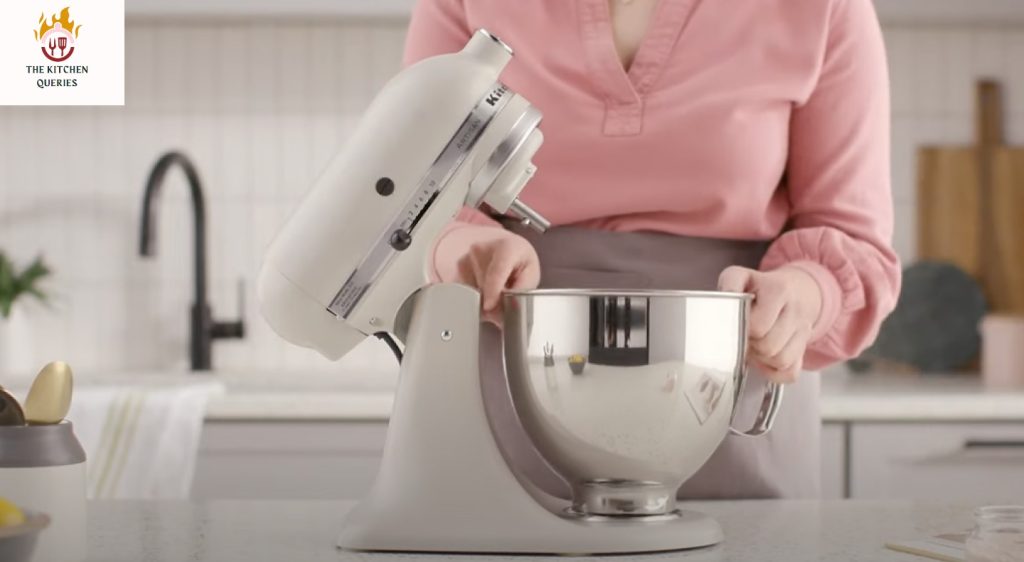
Food mixers are versatile kitchen appliances that perform various tasks, making them popular for home cooks and professional chefs.
Here are some common uses of food mixers:
- Mixing ingredients – The primary use of food mixers is for mixing ingredients, such as dough, batter, cake mixes, and other food preparations.
- Whisking – Food mixers can also be used for ingredients such as eggs, cream, and meringue.
- Kneading – Some food mixers come equipped with a dough hook, allowing them to knead the dough for bread or pizza.
- Grinding and mincing – Some food mixers have attachments for grinding or mincing meat, vegetables, and other foods.
- Juicing – Some food mixers come with attachments for juicing fruits and vegetables, allowing users to make fresh juices at home.
- Blending – Some food mixers come with blending attachments, allowing users to make smoothies, soups, and other blended dishes.
- Shredding and slicing – Some food mixers have attachments for shredding or slicing food, such as cheese or vegetables.
Care:
- Clean the mixer after each use.
- Clean attachments separately.
- Don’t immerse the motor housing in water.
- Use the mixer according to the manufacturer’s instructions.
- Store the mixer properly.
- Check for loose or worn parts.
- Lubricate the mixer if needed.
Uses Of Kitchen Tools & Utensils (Cutlery)
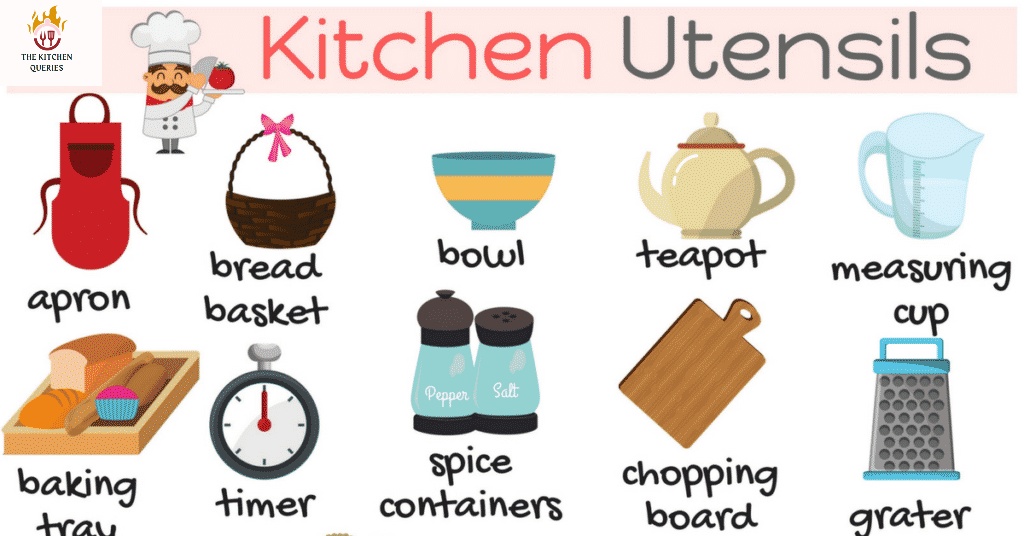
Kitchen tools and utensils, also commonly known as cutlery, are essential for preparing and cooking food in the kitchen.
Here are some common uses of kitchen tools and utensils:
- Knives – Knives are used for chopping, slicing, and dicing ingredients, such as vegetables, fruits, meat, and poultry.
- Cutting boards – Cutting boards provide a safe surface for chopping and cutting ingredients and can be made of wood, plastic, or other materials.
- Mixing bowls – Mixing bowls are used for mixing ingredients, such as batter, dough, and salads.
- Measuring cups and spoons – Measuring cups and spoons accurately measure ingredients, such as flour, sugar, and spices.
- Graters are used for grating cheese, vegetables, and other foods.
- Peelers– peels the skin of fruits and vegetables like potatoes, apples, and carrots.
- Tongs – Tongs are used for flipping and turning food in a pan or on a grill and serving food.
- Spatulas – Spatulas are used for flipping and turning food in a pan or grill and for spreading frosting or other toppings.
- Whisks – Whisks are used for whisking ingredients together, such as eggs, cream, and sauces.
- Ladles are used for scooping and serving soups, stews, and sauces.
Care:
- To dry your utensils hang spoons or fish slicer on a hanger.
- Wash immediately after use in hot soapy water.
- Do not soak; remove stains with steel wools.
- Keep knife on rack.
Uses Of Wooden Articles
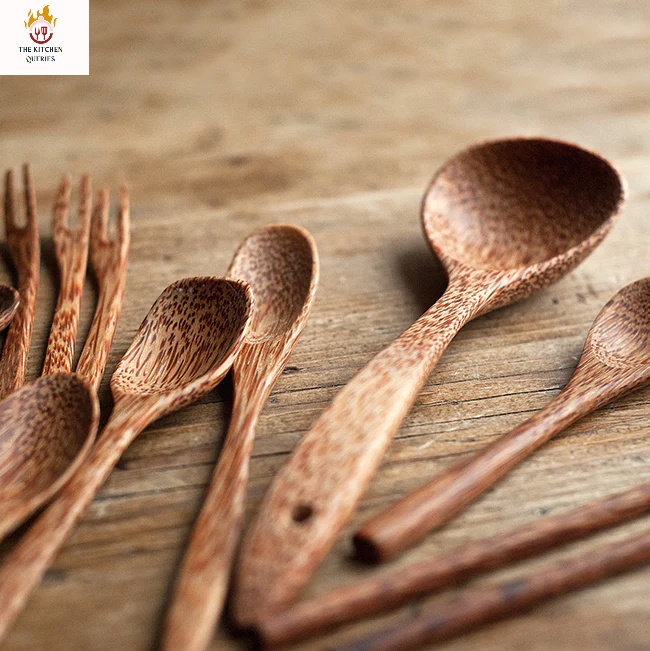
Wooden articles are commonly used in the kitchen due to their durability, natural beauty, and heat-resistant properties.
Here are some common uses of wooden articles in the kitchen:
- Cutting boards – Wooden boards are popular for cutting and preparing food due to their durability and natural antimicrobial properties.
- Utensils – Wooden utensils such as spoons, spatulas, and serving bowls are often used in cooking and serving food as they won’t scratch non-stick surfaces or conduct heat.
- Trays and platters – Wooden trays and platters are often used for serving food, such as appetizers, charcuterie boards, and cheese platters.
- Storage containers – Wooden storage containers such as bread boxes and utensil holders are a popular way to store food and kitchen utensils in an eco-friendly and natural way.
- Shelves and racks – Wooden shelves and racks can store pots and pans, dishes, and kitchen gadgets stylishly and functionally.
- Countertops and islands – Wooden countertops and islands are a popular choice in kitchen design due to their natural beauty and durability.
Care:
- Hand wash only.
- Dry thoroughly.
- Oil regularly.
- Don’t use harsh detergents.
- Store properly.
- Sand out stains and rough spots.
Uses Of Kitchen Scales

Here are some common types of measuring scales used in the kitchen:
- Kitchen scales – Kitchen scales measure the weight of ingredients such as flour, sugar, and spices. They can be either digital or mechanical and can be calibrated to different units of measurement such as grams, ounces, or pounds.
- Measuring cups – Measuring cups measure liquids and dry ingredients such as flour, sugar, and rice. They come in sets of different sizes and are calibrated to specific units of measurement. (cups, tablespoons, or teaspoons).
- Measuring spoons – Measuring spoons are used to measure small amounts of ingredients such as spices, baking powder, and vanilla extract. They come in sets of different sizes and are calibrated to specific units of measurement, such as tablespoons, teaspoons, or milliliters.
- Food scales – Food scales are used to weigh portions for portion control or dieting purposes. They can be either digital or mechanical.
- Thermometers – Thermometers are used to measure the temperature of food and liquids. They come in different types, such as digital and analog, and are calibrated to different temperature units, such as Fahrenheit or Celsius.
Video Guide:
Wrapping Up:
That was the overall discussion on Kitchen Utensils.
You can contact us if you have any other queries related to the Kitchen.
Do give your suggestions in the comment box or visit TheKitchenQueries for more info.

I am a happy person. An adventurer. Currently wokring on different projects regarding SEO
